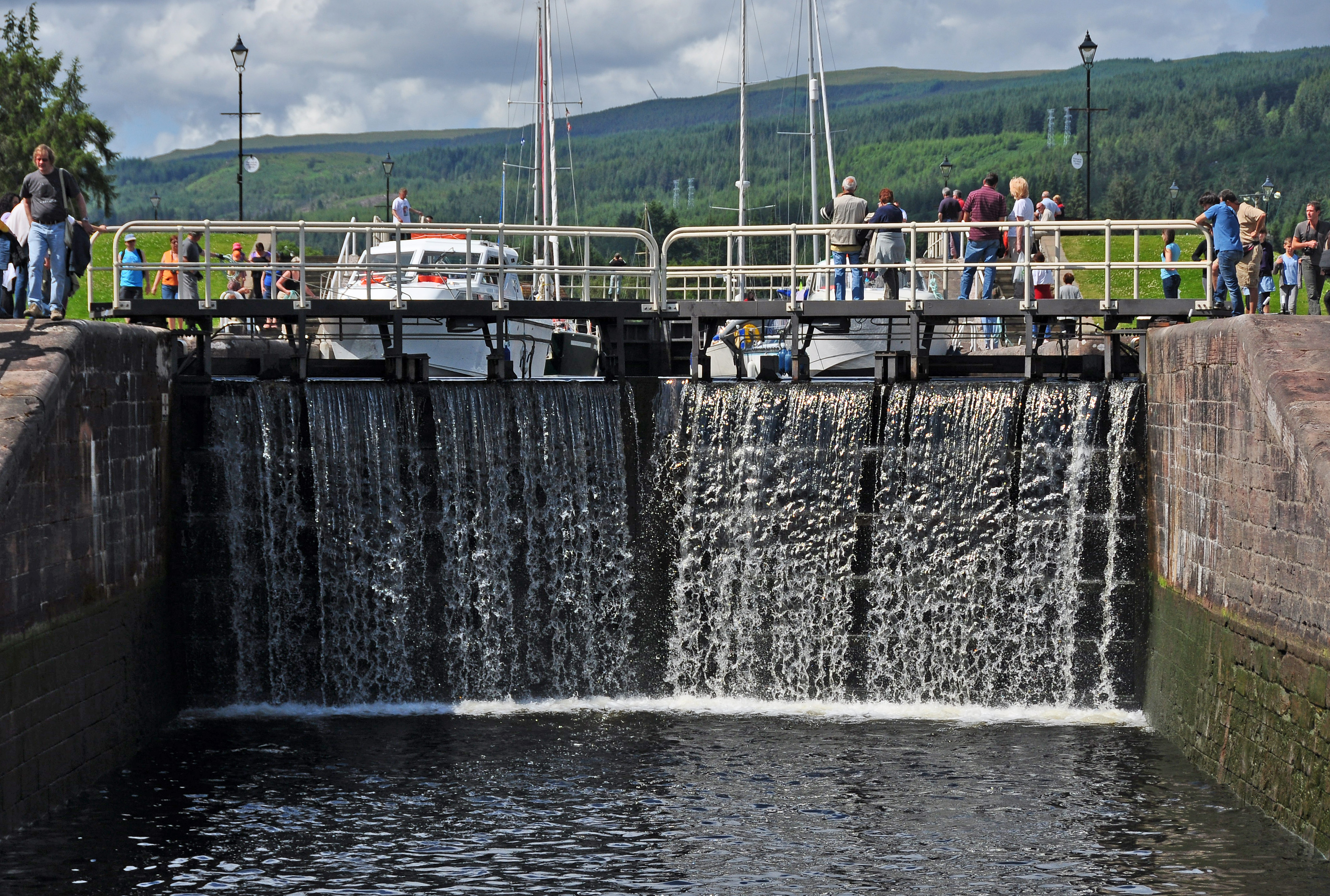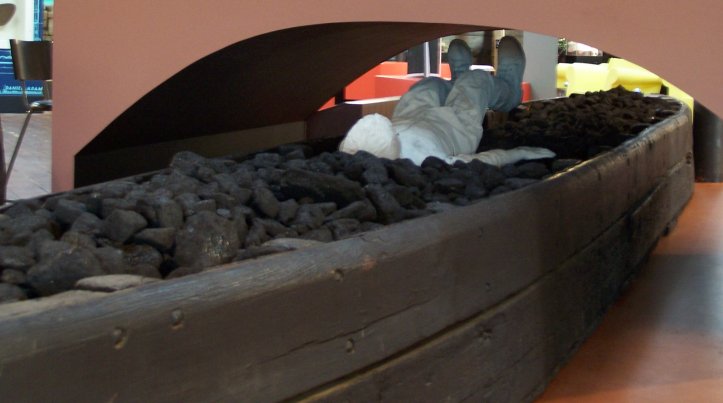How canals work

|
| View up the flight of locks on the Caledonian Canal at Fort Augustus in Scotland. The canal drops to the level of Loch Ness at these locks. |
Contents |
[edit] Introduction
Canals are human-made channels used for water conveyance (supply), or to service water transport vehicles. The oldest known canals were used for irrigation purposes, built in approximately 4000 BC in the region of the Middle East that is now modern day Iraq and Iran.
[edit] How canals are constructed
Canals can be constructed in different ways:
- A new canal can be created by excavating the body of the canal and providing water from an external source, such as streams or reservoirs.
- Dredging a channel in the bottom of an existing lake which is then drained.
- A stream can be canalised to make its navigable path more predictable and easier to manoeuvre. This involves dredging, damming and modifying its path.
[edit] What canals do
Canals use engineered structures such as:
- Weirs and dams: To raise river water levels to usable depths.
- Looping descents: To create a longer and gentler channel around a stretch of rapids or falls.
- Locks: So that ships and barges can ascend and descend.
[edit] Canal locks in action
A lock consists of a lock chamber which may be made from brick, stone or metal. This chamber holds the water. There are typically gates at each end of the lock chamber, and these gates control the flow of water.
When a vessel is at a lower point, a gate is allowed to open, which permits water to enter the lock and fill it with water. Once the water level is at the higher height, the vessel can continue on its journey.
The opposite action is used when the vessel is at a higher position and needs to proceed to a lower level. The vessel enters the lock with a high water level and then a gate opens - allowing the water to be released. When the water is at the adjusted lower level, the vessel is able to proceed.
In most instances, the main lock gates can only be opened when the water on both sides is at the same level. This means that the top lock only opens if the lock is full, and the bottom lock only opens when it is nearly empty.
[edit] Legging it
Legging was an early method of navigating vessels through canal tunnels. This practice was sometimes used during the 18th and early 19th centuries.
When horses, donkeys or other towing animals were not able to follow a towpath through a tunnel, people would have to move the boat with their feet by “walking” along the wall or roof of the canal tunnel. Professional wall walkers could be hired to take the vessels on longer tunnels, but it was more common for the operator of the boat to handle the task with assistance from the crew.
[edit] Related articles on Designing Buildings Wiki
Featured articles and news
One of the most impressive Victorian architects. Book review.
RTPI leader to become new CIOB Chief Executive Officer
Dr Victoria Hills MRTPI, FICE to take over after Caroline Gumble’s departure.
Social and affordable housing, a long term plan for delivery
The “Delivering a Decade of Renewal for Social and Affordable Housing” strategy sets out future path.
A change to adoptive architecture
Effects of global weather warming on architectural detailing, material choice and human interaction.
The proposed publicly owned and backed subsidiary of Homes England, to facilitate new homes.
How big is the problem and what can we do to mitigate the effects?
Overheating guidance and tools for building designers
A number of cool guides to help with the heat.
The UK's Modern Industrial Strategy: A 10 year plan
Previous consultation criticism, current key elements and general support with some persisting reservations.
Building Safety Regulator reforms
New roles, new staff and a new fast track service pave the way for a single construction regulator.
Architectural Technologist CPDs and Communications
CIAT CPD… and how you can do it!
Cooling centres and cool spaces
Managing extreme heat in cities by directing the public to places for heat stress relief and water sources.
Winter gardens: A brief history and warm variations
Extending the season with glass in different forms and terms.
Restoring Great Yarmouth's Winter Gardens
Transforming one of the least sustainable constructions imaginable.
Construction Skills Mission Board launch sector drive
Newly formed government and industry collaboration set strategy for recruiting an additional 100,000 construction workers a year.
New Architects Code comes into effect in September 2025
ARB Architects Code of Conduct and Practice available with ongoing consultation regarding guidance.
Welsh Skills Body (Medr) launches ambitious plan
The new skills body brings together funding and regulation of tertiary education and research for the devolved nation.
Paul Gandy FCIOB announced as next CIOB President
Former Tilbury Douglas CEO takes helm.
























